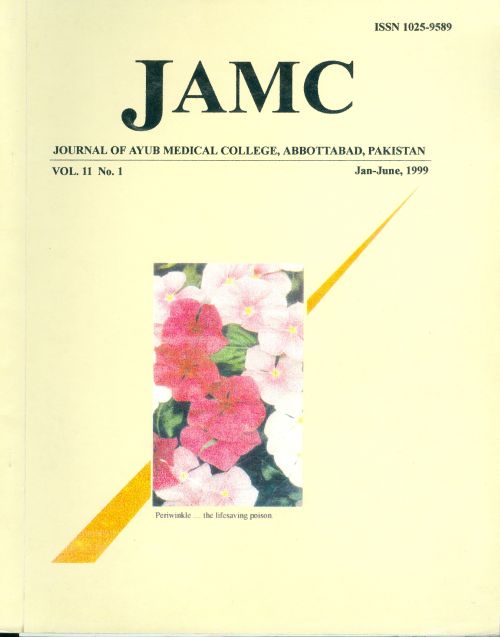ITRACONOZOLE THERAPY IN TINEA V ERSICOLOR
Abstract
The efficacy of itraconazole was assessed in an open trial in 60 patients with wide spread disseminated lesions ofTinea versicolor confirmed by direct microscopy. The patients were allocated randomly to one of the two treatmentregimens. 200 mg once daily for 7 days or 100 mg once daily for 15 days. On assessment 3 weeks after the end of thetreatment. 50 patients were healed. 4 had mild residual lesions. 4 had considerable residua! lesions, and 2 hadrelapsed. Two patients reported pain in the abdomen. Two patients reported nausea, vomiting and dyspepsia. Twopatients had mild elevation of SOOT, and SOFT. Conclusion: Treatment of tinea versicolor with itraconozole 200mgday for 7 days or l00 mg day for 15 days is recommended.References
Robert s, S.O.B, pitrysporum orbiculare incidence and
distribution on clinically normal skin. Br. J. of
Dermatology (1969a) 81:264.
Faergman, J. and Fredikson, T. Tinea versicolor with
regard to seborrheic dermatitis. Archives of
Dermatology, 1979;115: 966.
Burke, R.C. Tinea versicolor: Susceptibility factors and
experimental infections in human beings. Journal of
investigative dermatology (1961); 36: 389.
Savin, R.C, Systemic itraconozole in tinea vesicular: a
double blind examination and 1 year follow up. Journal
of American Academy of Dermatology 1984; 10: 824.
Janssen Pharmaceutica (1984) RS 1211 Basic Medical
Information Brochure, August 1984
Del Palacio Hernanz A. Delgado Vicente S. Menendez
Romes. Randomized comparative clinical trial of
itraconozole and selenium sulphide shampoo for the
treatment of tinea versicolor Rev Infect. Dis. 1987.
(Suppl-l)
Issue
Section
License
Journal of Ayub Medical College, Abbottabad is an OPEN ACCESS JOURNAL which means that all content is FREELY available without charge to all users whether registered with the journal or not. The work published by J Ayub Med Coll Abbottabad is licensed and distributed under the creative commons License CC BY ND Attribution-NoDerivs. Material printed in this journal is OPEN to access, and are FREE for use in academic and research work with proper citation. J Ayub Med Coll Abbottabad accepts only original material for publication with the understanding that except for abstracts, no part of the data has been published or will be submitted for publication elsewhere before appearing in J Ayub Med Coll Abbottabad. The Editorial Board of J Ayub Med Coll Abbottabad makes every effort to ensure the accuracy and authenticity of material printed in J Ayub Med Coll Abbottabad. However, conclusions and statements expressed are views of the authors and do not reflect the opinion/policy of J Ayub Med Coll Abbottabad or the Editorial Board.
USERS are allowed to read, download, copy, distribute, print, search, or link to the full texts of the articles, or use them for any other lawful purpose, without asking prior permission from the publisher or the author. This is in accordance with the BOAI definition of open access.
AUTHORS retain the rights of free downloading/unlimited e-print of full text and sharing/disseminating the article without any restriction, by any means including twitter, scholarly collaboration networks such as ResearchGate, Academia.eu, and social media sites such as Twitter, LinkedIn, Google Scholar and any other professional or academic networking site.









